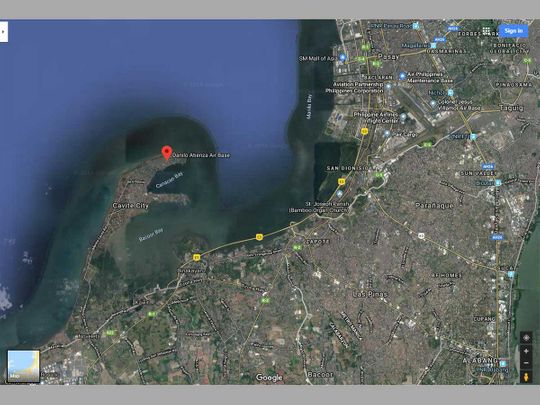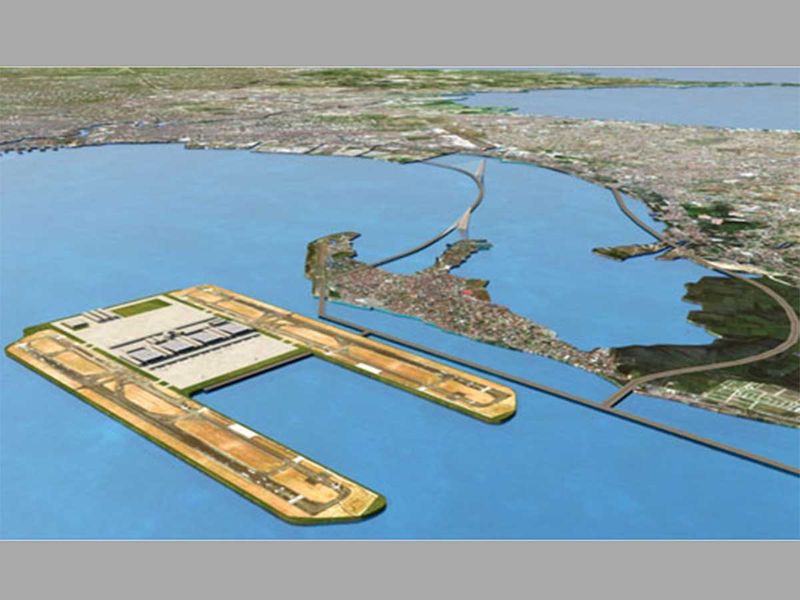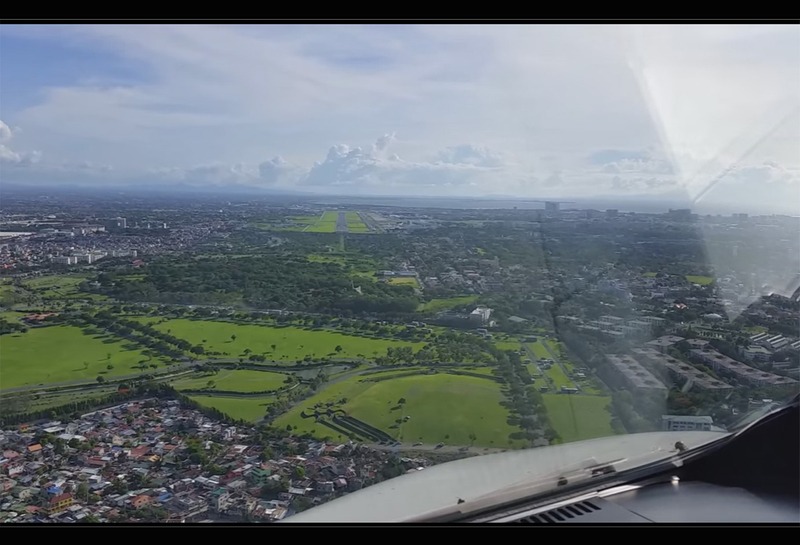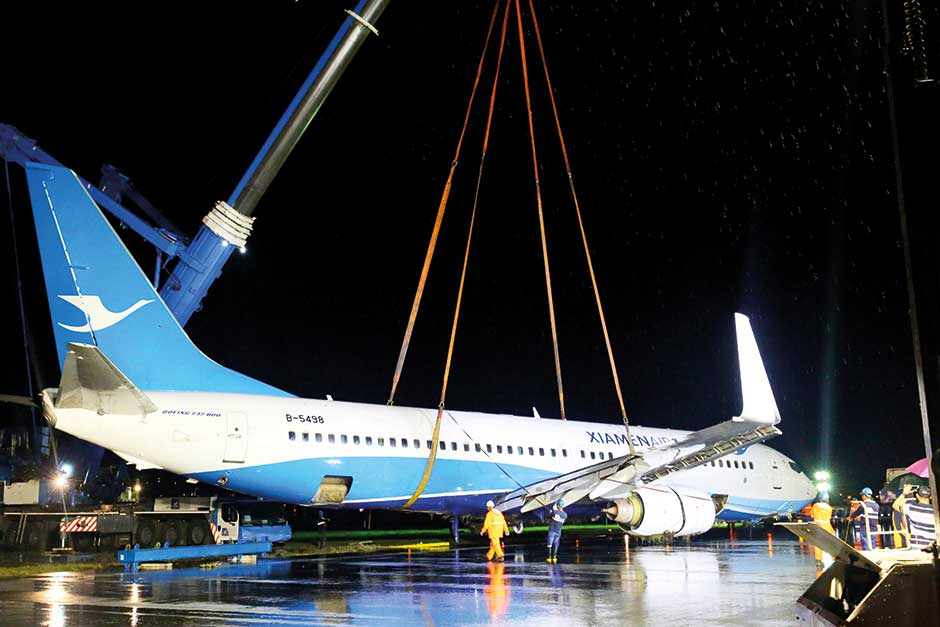
Highlights
- Sangley Point, in Cavite, is set to open in November to serve domestic and general aviation flights
- It will be connected to Manila by 28-minute ferry (to Mall of Asia) and by coastal expressway to Manila's Roxas Boulevard
- Sangley will serve as Manila's second airport
- Other than Sangley, there at least three projects proposed or underway: NAIA rehabilitation project valued at Php102-billion ($1.96 billion); the Clark airport's new terminal; and the Php735-billion ($14.15 billion) Bulacan International.
MANILA, Philippines: Manila would have a second airport by November, to serve domestic passegers and general aviation — if President Rodrigo Duterte would have his way.
The chief executive ordered the start of operations of Sangley Airport, a former military facility, by November, instead of December, to ease congestion in the country’s premiere airport, the Ninoy Aquino International Airport (NAIA), the presidential palace announced in a statement on Tuesday, June 11.
On June 10, before the Monday Cabinet meeting where the country's aviation woes were tackled, Duterte made a surprise visit to NAIA Terminal 2.
During the unannounced inspection, Duterte expressed dismay and hinted at the revamp of NAIA officials, Philippine media report, quoting Presidential Spokesman Salvador Panelo.
Transportation Secretary Arthur Tugade had presented plans to Duterte to transfer “general aviation or domestic flights” to Sangley Point, now being transformed into an commercial airport via a Php500-million ($9.6 million) government funding.

But now, instead of completing the rehab work at the former military air base in Cavite by December, Duterte wants it done a month earlier.
Panelo said Duterte ordered Tugade to open Sangley by November ahead of the Christmas rush. The order was given during the 38th Cabinet meeting in Malacañang late on Monday.
NAIA, which as has 4 terminals, is the only aviation gateway at the Philippine capital, which has more than 12.8 million inhabitants. In contrast, London (population: 8.14 in 2011) has at least five airports — Heathrow, City, Standsted, Gatwick and Luton. San Francisco, with less than a million inhabitants, has at least four airports in the Bay Area alone.

Duterte apologised to passengers affected by the flight delays and cancelations, and vowed to solve flight woes within a month.
Access to Sangley
Sangley is currently accessible via Radial 1 Road, which connects Cavite City to Roxas Boulevard in Manila.
It is also accessible via Ferry service. The government has started the test of ferries planned to operate from the SM Mall of Asia (MoA) to Sangley, with a travel time of about 18-24 minutes.
NAIA, which as has 4 terminals, is the only aviation gateway at the Philippine capital, which has more than 12.8 million inhabitants. In contrast, London (population: 8.14 in 2011) has at least five airports — Heathrow, City, Standsted, Gatwick and Luton. San Francisco, with less than a million inhabitants, has at least four airports in the Bay Area alone.
42 m
number of passengers that went through the country's main gateway in 2017It had earlier been reported that the transfer of some business flights to the new airport may be done within the year.
Part of the Php500-million make-over job spearheaded by the Department of Transport involves the construction of a passenger terminal building, hangars, a new tower, night operations equipment, and completion of a 2,300-meter runway.
Solutions
The government is currently fast-tracking airport projects in Bulacan and Sangley in Cavite, as well as the NAIA rehabilitation, and the additional terminal at the Clark International Airport in Pampanga, according to Transportation Secretary Arthur Tugade.
3 m
Projected annual passenger growth in Manila. Officials said it will be impossible for its present facilities to accommodate 15 million more passengers in 5 years.On Monday morning, before the Cabinet meeting, Duterte made a surprise inspection of NAIA Terminal 2 where he promised airplane passengers of a solution to flight woes. After the surprise inspection, Duterte expressed dismay and hinted at its revamp, according to Presidential Spokesman Salvador Panelo said in a statement on Tuesday, June 11.
NAIA congestion
In August 2018, a Boeing 737-800 operating XiamenAir Flight 8667, crash landed at the Ninoy Aquino International Airport in Metro Manila and skidded off the runway. The Xiamen Air accident prompted 631 flight cancellation and left around 250,000 passengers stranded.
The Manila aviation paralysis was blamed on the lack of alternative airports to NAIA in Manila.

On-going/proposed Manila airport projects
There are number of aviation projects to aimed ease aviation gridlock in Manila, a city with 12.8 million inhabitants.
Other than Sangley, there at least three projects underway: The Ninoy Aquino International Airport (NAIA) rehabilitation project valued at Php102-billion ($1.96 billion); the Clark International Airport's new terminal; and the Php 735-billion ($14.15 billion) Bulacan Airport.
Of these, only the new terminal at Clark is in the implementation phase, while the rest have yet to be approved by the National Economic and Development Authority (NEDA):
(1) Clark International Airport: A Php6-billion ($115 billion) Clark Airport will be operational by June 2020. The project — carried out by a consortium consisting of the Gokongwei, Gotianun and Singaporean airport operator Changi — seeks to modernise this international gateway and double the terminal capacity to eight million passengers per year.
(2) Bulacan Airport: An unsolicited proposal to build the Php 735-billion ($14.15 billion) Bulacan International Airport was already granted conditional approval, but comments from NEDA and the Department of Finance are awaited.
(3) NAIA: The Manila International Airport Authority (MIAA) Board has approved the Php102-billion rehabilitation project proposed by the NAIA Consortium, with a 15-year concession agreement. The project is due for approval by the NEDA Investment Coordination Committee.
(4) Sangley Airport: A government-to-government scheme. The Cavite provincial government proposed a Php552-billion conversion of Sangley Point as alternative to Manila International Airport. The DOTr said it has "no objections" to the proposal. The project also needs approval of the Philippine Reclamation Authority, and the final go signal from NEDA.
Except for Sangley, others fall under the Build-Operate-Transfer scheme (no expense to the government), in which the private contractor would rehabilitate, develop, operate, and maintain the airports.








